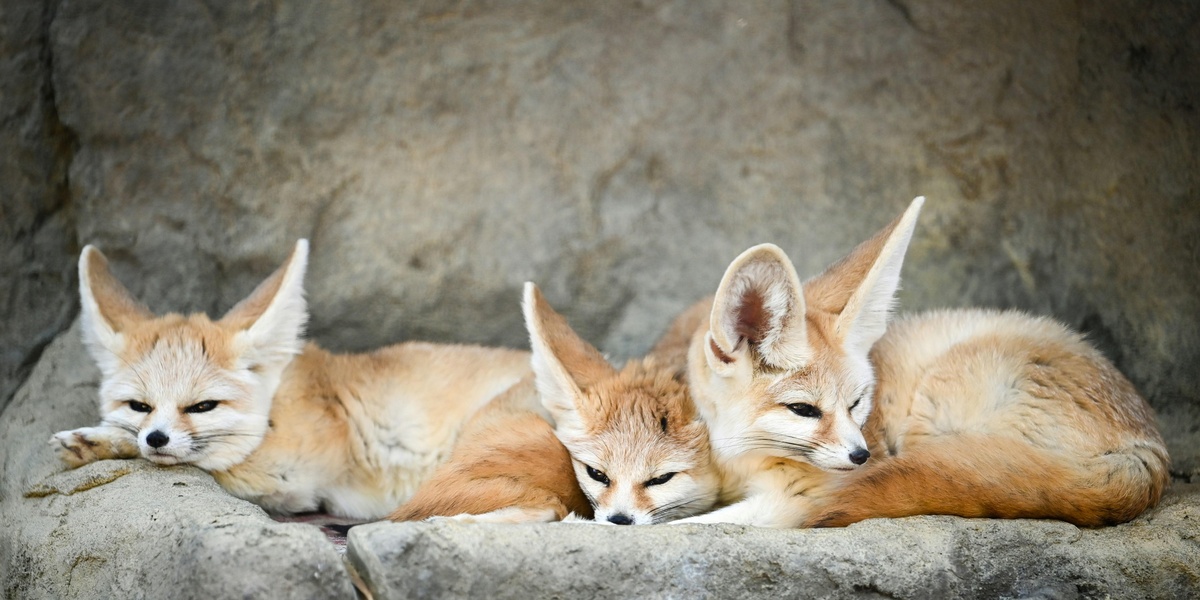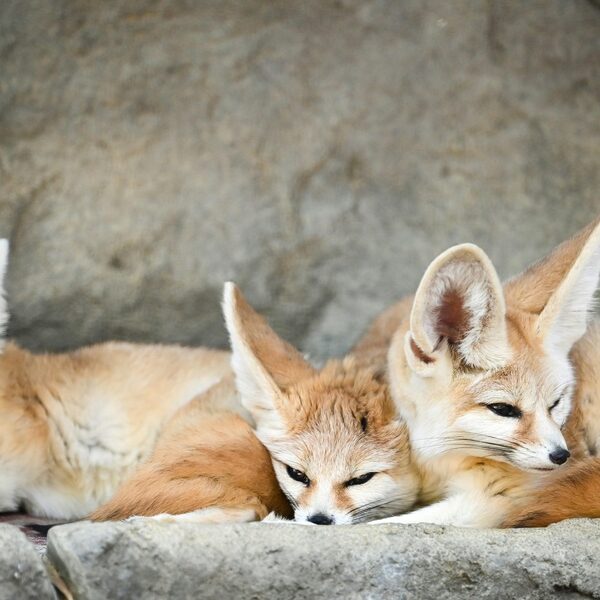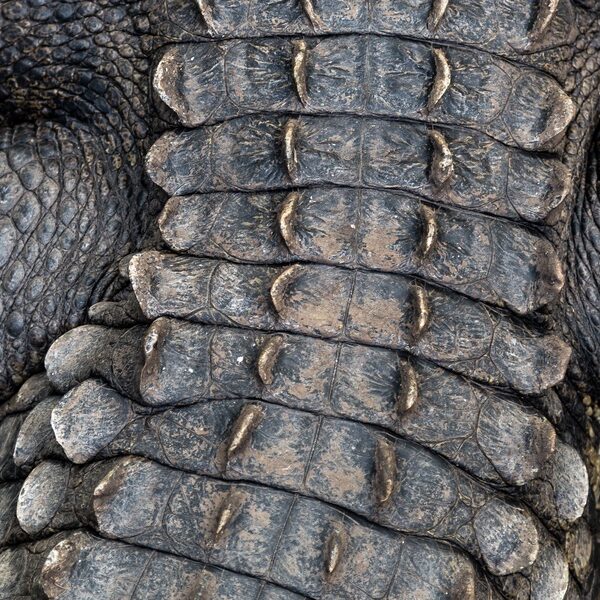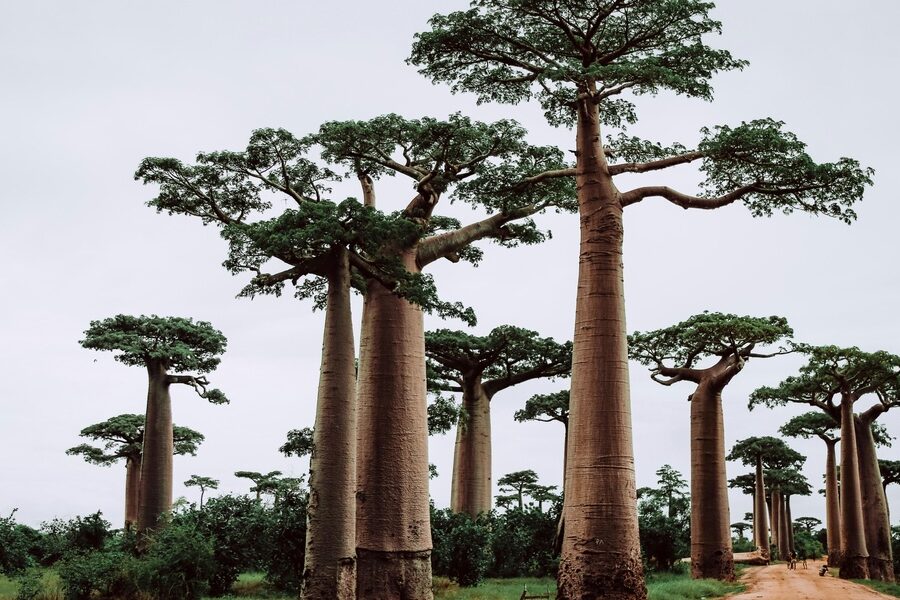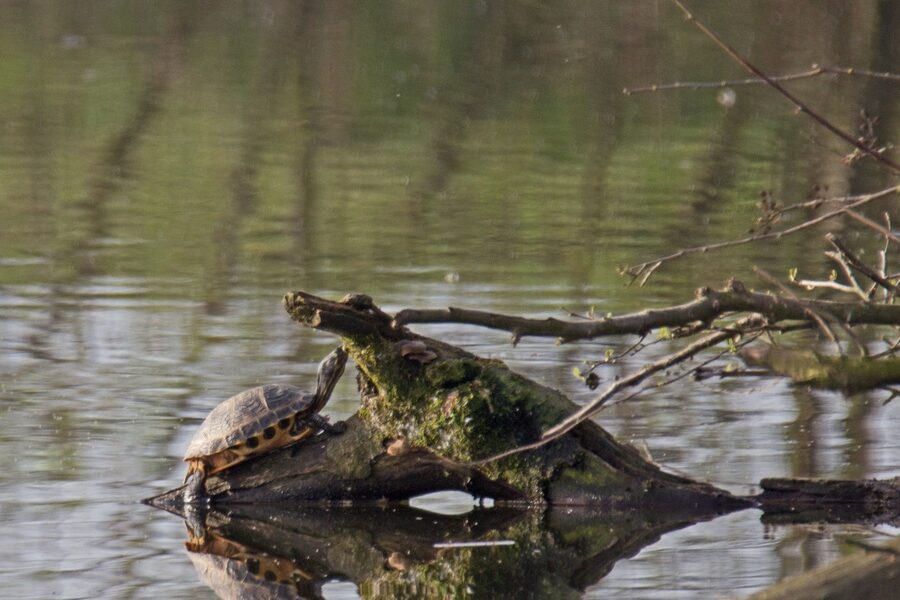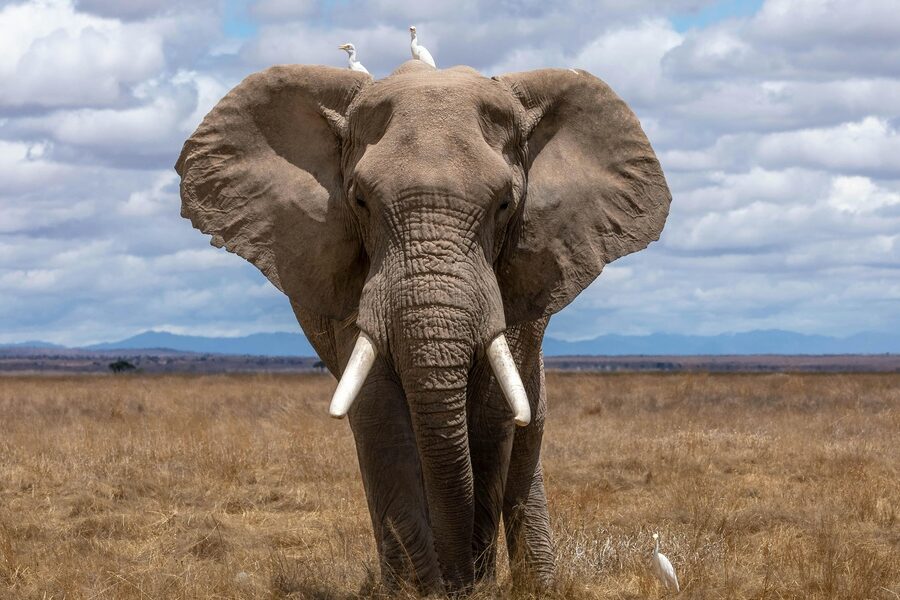Algeria, with its vast and varied landscapes ranging from the Mediterranean coast to the Sahara Desert, hosts an incredible array of wildlife. This geographical diversity creates unique habitats, supporting a rich biodiversity often overlooked.
Among these fascinating creatures, the Mammals of Algeria form a particularly interesting group. This comprehensive list details exactly 50 species, from the elusive African Golden Wolf found in its northern regions to the widespread Wild Boar. For each, you’ll find below key information organized by Scientific Name, Habitat, and Conservation Status, providing a valuable resource for researchers and enthusiasts alike.
Are there many endemic mammals in Algeria?
While few mammal species are strictly endemic to Algeria alone, meaning they are found nowhere else in the world, the country’s diverse ecosystems support several species with very limited distributions across North Africa. Many others represent significant populations within their broader African or Mediterranean ranges, making Algeria a crucial habitat for their survival.
What are the main conservation challenges for Algerian mammals?
Mammals in Algeria face a range of conservation challenges, primarily driven by habitat degradation and loss due to agricultural expansion, urbanization, and resource exploitation. Climate change, particularly desertification, also poses a significant threat, altering crucial habitats and water sources. Additionally, poaching and human-wildlife conflict in certain areas further stress vulnerable populations.
Mammals of Algeria
| Mammal Name | Scientific Name | Habitat | Conservation Status |
|---|---|---|---|
| Barbary Macaque | Macaca sylvanus | Cedar and oak forests of the Atlas Mountains | Endangered |
| Fennec Fox | Vulpes zerda | Sahara Desert, sandy regions | Least Concern |
| Saharan Cheetah | Acinonyx jubatus hecki | Arid plains, foothills, and mountains of the Sahara | Critically Endangered |
| Cuvier’s Gazelle | Gazella cuvieri | Atlas Mountains, hills, and high plateaus | Vulnerable |
| Barbary Sheep | Ammotragus lervia | Rocky mountains and arid highlands | Vulnerable |
| Sand Cat | Felis margarita | Sandy and stony deserts of the Sahara | Least Concern |
| Dorcas Gazelle | Gazella dorcas | Desert, semi-desert, and savanna plains | Vulnerable |
| Barbary Stag | Cervus elaphus barbarus | Humid forests of the northeastern coastal mountains | Near Threatened |
| African Golden Wolf | Canis lupaster | Atlas Mountains, coastal plains, and semi-arid regions | Least Concern |
| Rüppell’s Fox | Vulpes rueppellii | Sahara Desert, arid and sandy regions | Least Concern |
| Caracal | Caracal caracal | Savannas, semi-deserts, and scrub forests | Least Concern |
| Striped Hyena | Hyaena hyaena | Semi-arid scrublands, mountains, and open woodlands | Near Threatened |
| Common Genet | Genetta genetta | Forests, savannas, and scrublands | Least Concern |
| Mediterranean Monk Seal | Monachus monachus | Coastal caves and secluded beaches | Endangered |
| Common Bottlenose Dolphin | Tursiops truncatus | Coastal and offshore Mediterranean waters | Least Concern |
| Fin Whale | Balaenoptera physalus | Deep offshore Mediterranean waters | Vulnerable |
| Crested Porcupine | Hystrix cristata | Forests, scrublands, and rocky hills | Least Concern |
| Barbary Ground Squirrel | Atlantoxerus getulus | Rocky areas in the Atlas Mountains | Least Concern |
| North African Hedgehog | Atelerix algirus | Scrublands, grasslands, and cultivated areas | Least Concern |
| Cape Hare | Lepus capensis | Grasslands, savannas, and semi-deserts | Least Concern |
| North African Elephant Shrew | Petrosaltator rozeti | Semi-arid, rocky habitats | Least Concern |
| Wild Boar | Sus scrofa | Forests, woodlands, and wetlands | Least Concern |
| Saharan Striped Polecat | Ictonyx libycus | Desert and semi-desert fringes | Least Concern |
| European Otter | Lutra lutra | Rivers, lakes, and coastal wetlands in the north | Near Threatened |
| African Wildcat | Felis lybica | Savannas, forests, and semi-deserts | Least Concern |
| Rhim Gazelle | Gazella leptoceros | Sandy deserts (ergs) of the Sahara | Endangered |
| North African Gundi | Ctenodactylus gundi | Rocky, arid mountainous areas | Least Concern |
| Fat-tailed Gerbil | Pachyuromys duprasi | Sandy desert regions | Least Concern |
| Lesser Horseshoe Bat | Rhinolophus hipposideros | Forests, caves, and old buildings | Least Concern |
| Egyptian Fruit Bat | Rousettus aegyptiacus | Caves, ruins, and forests with fruit trees | Least Concern |
| Common Pipistrelle | Pipistrellus pipistrellus | Diverse habitats, including urban areas | Least Concern |
| Schreiber’s Bent-winged Bat | Miniopterus schreibersii | Caves and mines in temperate regions | Vulnerable |
| Striped Dolphin | Stenella coeruleoalba | Deep offshore Mediterranean waters | Vulnerable |
| Sperm Whale | Physeter macrocephalus | Deep submarine canyons in the Mediterranean | Endangered |
| African Savanna Hare | Lepus victoriae | Grasslands and open woodlands | Least Concern |
| Maghrebian Gerbil | Gerbillus maghrebi | Coastal plains and plateaus | Least Concern |
| Shaw’s Jird | Meriones shawi | Coastal plains and semi-arid steppes | Least Concern |
| Maghrebian Garden Dormouse | Eliomys munbyanus | Forests, scrublands, and rocky areas | Least Concern |
| Lesser Mouse-tailed Bat | Rhinopoma hardwickii | Arid and semi-arid caves and ruins | Least Concern |
| Algerian Shrew | Crocidura algerica | Humid forests and scrublands of the coast | Data Deficient |
| Barbary Shrew | Crocidura russula | Forests, grasslands, and agricultural areas | Least Concern |
| Savi’s Pipistrelle | Hypsugo savii | Wide range of habitats from mountains to coasts | Least Concern |
| Kuhl’s Pipistrelle | Pipistrellus kuhlii | Urban areas, wetlands, and forests | Least Concern |
| Leisler’s Bat | Nyctalus leisleri | Forests and woodlands | Least Concern |
| Greater Mouse-eared Bat | Myotis myotis | Woodlands, pastures, and caves | Near Threatened |
| Geoffroy’s Bat | Myotis emarginatus | Wooded areas near water, caves for roosting | Least Concern |
| Lesser Egyptian Jerboa | Jaculus jaculus | Sandy deserts and arid plains | Least Concern |
| Hoogstraal’s Gerbil | Gerbillus hoogstraali | Arid coastal plains | Data Deficient |
| Rosy’s Gerbil | Gerbillus rosalinda | Arid inland plains | Data Deficient |
| Plecotus gaisleri | Gaisler’s Long-eared Bat | Desert and arid mountain regions | Least Concern |
Images and Descriptions
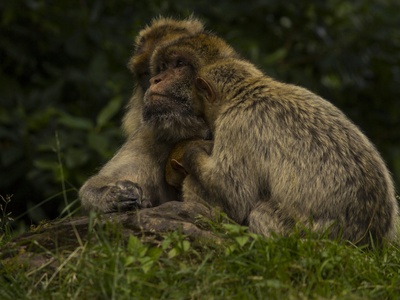
Barbary Macaque
The only primate native to North Africa, this tailless monkey is known for its complex social structures. It faces significant threats from habitat loss and the illegal pet trade, making it a key conservation priority.
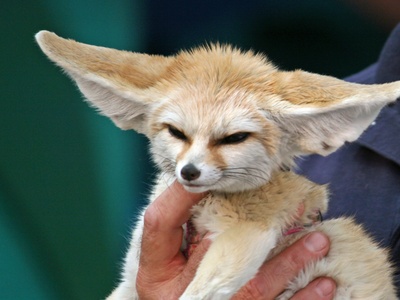
Fennec Fox
The world’s smallest fox, instantly recognizable by its enormous ears that help dissipate heat and locate prey underground. It is perfectly adapted to desert life and is the national animal of Algeria.
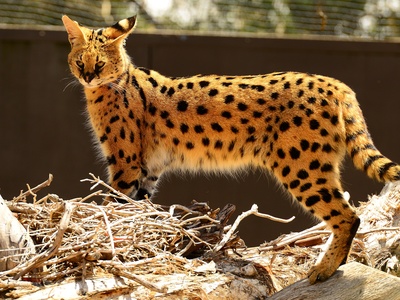
Saharan Cheetah
A rare, desert-adapted cheetah subspecies with a paler coat and smaller build. With fewer than 250 individuals left, it roams vast territories, making conservation efforts incredibly challenging in the remote Sahara.
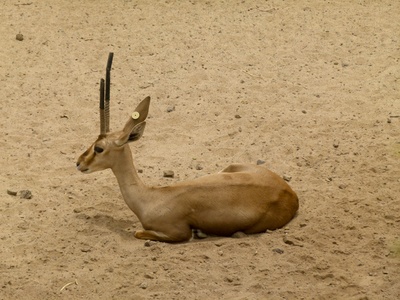
Cuvier’s Gazelle
Also known as the Atlas gazelle, this elegant species prefers rugged, hilly terrain. Once nearly extinct, its population has recovered slightly due to protection, but it remains threatened by poaching and habitat degradation.
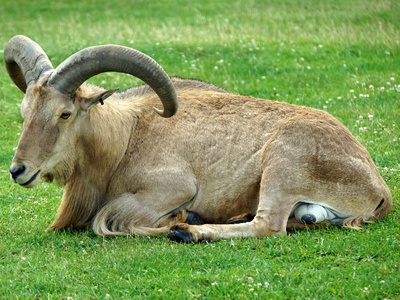
Barbary Sheep
A unique species that is part sheep, part goat, known for its impressive curved horns and shaggy mane on its throat and chest. It is exceptionally agile, capable of navigating steep, rocky cliffs with ease.
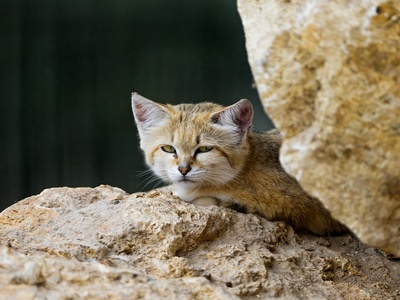
Sand Cat
A small, elusive wild cat perfectly adapted to desert life, with broad, furred paws that protect it from hot sand. It hunts small rodents and reptiles, primarily at night, and can survive without drinking water.
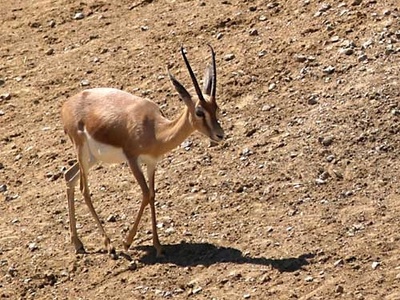
Dorcas Gazelle
One of the most common gazelles in the Sahara, well-adapted to arid conditions. It can go its entire life without drinking water, obtaining all necessary moisture from the plants it eats.
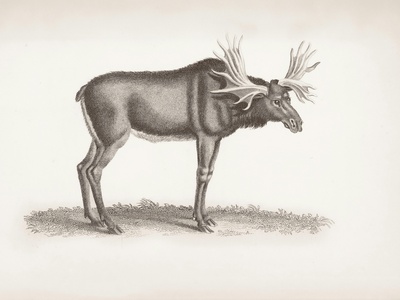
Barbary Stag
The only native deer species in Africa. It was once extinct in Algeria but has been successfully reintroduced through conservation programs, representing a significant success story for North African wildlife.
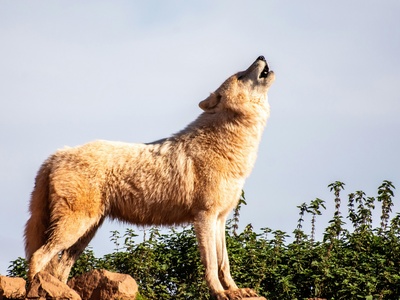
African Golden Wolf
A medium-sized canid once thought to be a subspecies of the golden jackal. It is a highly adaptable predator and scavenger, playing a crucial role in its ecosystem by controlling rodent and rabbit populations.
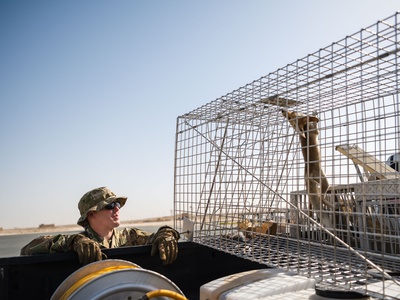
Rüppell’s Fox
A small fox adapted to extreme desert environments, featuring large ears for cooling and fur-covered paw pads for walking on hot sand. It is an omnivore with a diet of insects, small mammals, and plants.
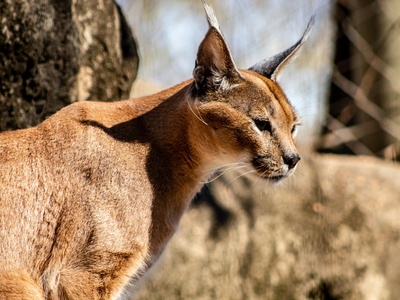
Caracal
A powerful, medium-sized cat known for its long, black ear tufts and incredible leaping ability, able to catch birds in mid-air. It is a solitary and nocturnal hunter, preying on birds, rodents, and small antelopes.
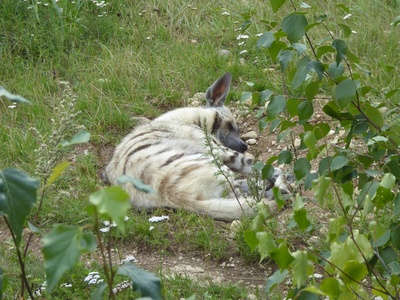
Striped Hyena
A shy and primarily nocturnal scavenger with distinct vertical stripes and a bushy mane. Unlike its spotted cousin, it is mostly solitary and plays a vital role as a cleanup crew in its environment.
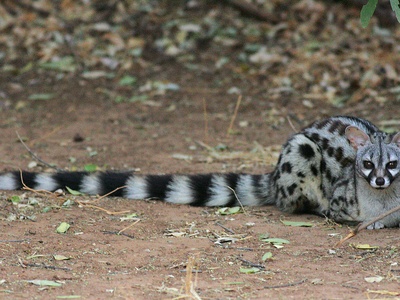
Common Genet
A slender, cat-like carnivore with a spotted coat, a long banded tail, and a pointed face. It is a nimble and secretive nocturnal hunter, often found in trees, preying on small mammals, birds, and insects.
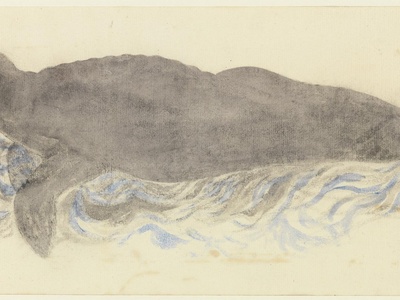
Mediterranean Monk Seal
One of the world’s most endangered marine mammals, with a tiny, fragile population along the Algerian coast. These seals require undisturbed coastal caves for resting and breeding, making them highly vulnerable to human activity.
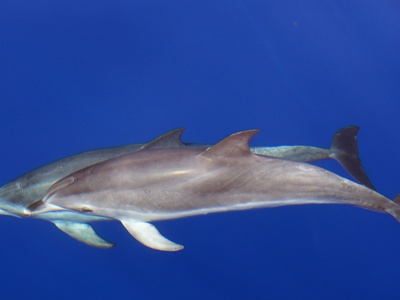
Common Bottlenose Dolphin
A highly intelligent and social marine mammal frequently seen along Algeria’s coast. Known for their playful behavior and complex communication, they are a common sight for boaters and coastal observers.
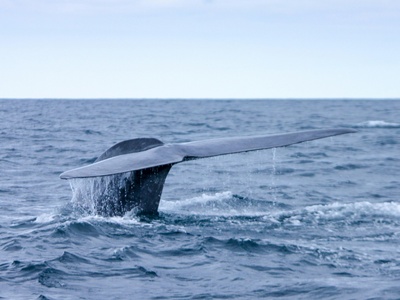
Fin Whale
The second-largest animal on Earth, this streamlined baleen whale is a regular visitor to the deep waters of the western Mediterranean off Algeria. It is known for its incredible speed, earning it the nickname “greyhound of the sea.”
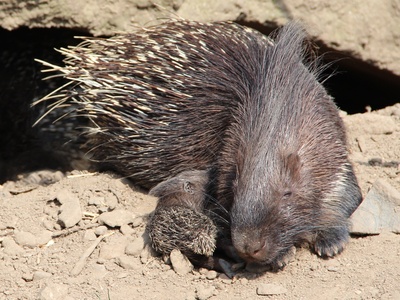
Crested Porcupine
A large rodent famous for its formidable coat of long, sharp quills, which it uses for defense against predators. It is nocturnal and forages for roots, bulbs, and fallen fruit.
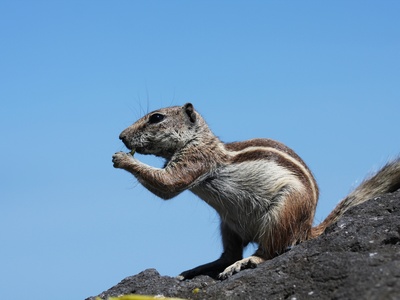
Barbary Ground Squirrel
A species of ground squirrel native to the Atlas Mountains, easily identified by its bushy tail and white longitudinal stripes. It lives in colonies among rocks and is active during the day.
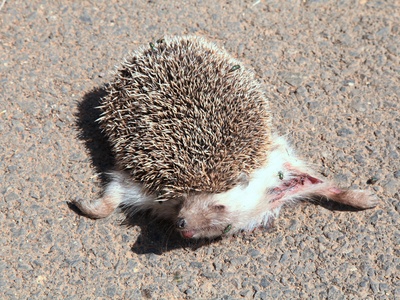
North African Hedgehog
A small, nocturnal mammal with a coat of sharp spines. When threatened, it rolls into a tight ball for protection. It is a common sight in gardens and agricultural lands, where it feeds on insects.
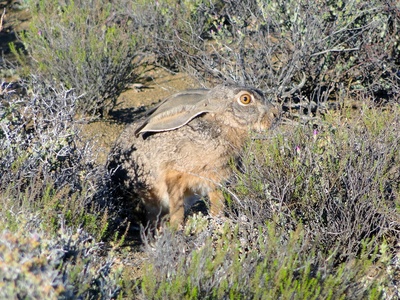
Cape Hare
A widespread and adaptable hare known for its long ears and powerful hind legs, enabling it to run at high speeds to escape predators. It is a common herbivore across many of Algeria’s open landscapes.
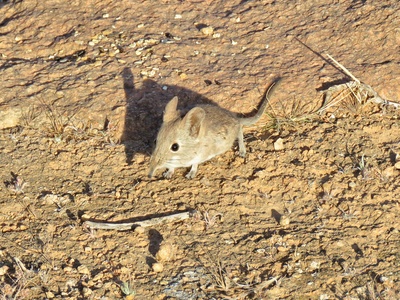
North African Elephant Shrew
Neither an elephant nor a shrew, this small mammal has a long, flexible snout it uses to forage for insects. It is one of the fastest small mammals, moving in a bounding gait along cleared pathways.
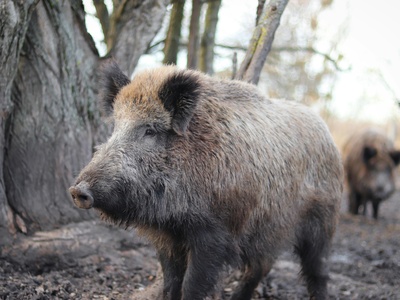
Wild Boar
A highly adaptable and resilient omnivore found in the more humid northern parts of Algeria. It is the ancestor of the domestic pig and is known for its intelligence and tough hide.
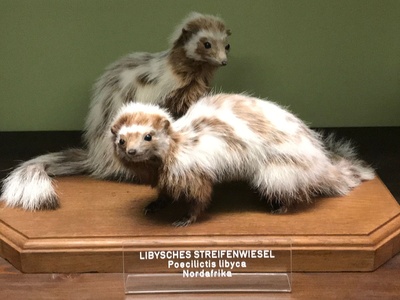
Saharan Striped Polecat
A small, mustelid carnivore with a striking black-and-white striped pattern. Also known as the Libyan striped weasel, it is a nocturnal hunter that preys on rodents, lizards, and insects.
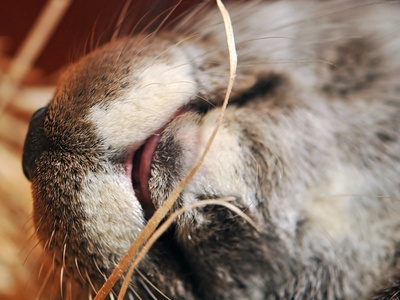
European Otter
A semi-aquatic mammal with a streamlined body and webbed feet, perfectly adapted for life in the water. Its population in Algeria is small and threatened by water pollution and habitat loss in northern wetlands.
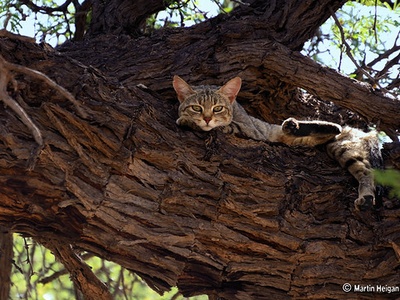
African Wildcat
The ancestor of the domestic cat, this wildcat is slightly larger and lankier than its domesticated relatives. It is a skilled and solitary hunter, preying mainly on small rodents and birds at dawn and dusk.
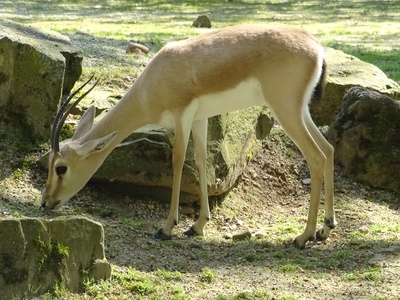
Rhim Gazelle
Also known as the slender-horned gazelle, this pale-colored species is exquisitely adapted to life in hyper-arid sand seas. Its numbers have declined drastically due to uncontrolled hunting and habitat disturbance.
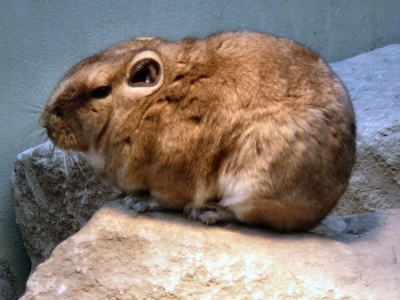
North African Gundi
A small, stocky rodent that lives in colonies among rocks in the Atlas Mountains. Gundis are known for sunbathing on rocks in the morning to regulate their body temperature and are very sociable animals.
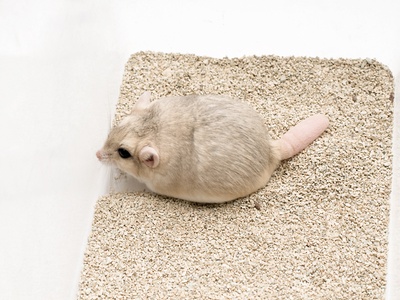
Fat-tailed Gerbil
A unique rodent known for its club-shaped tail, where it stores fat and water, much like a camel’s hump. It is a popular exotic pet but exists in the wild across the northern Sahara.
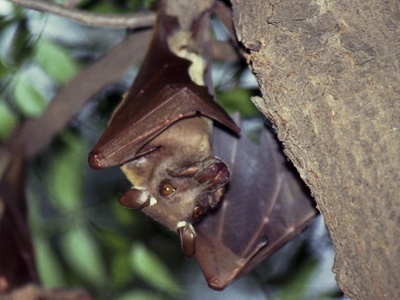
Lesser Horseshoe Bat
One of Europe’s smallest bats, also found in northern Algeria. It gets its name from the horseshoe-shaped noseleaf it uses for echolocation. It hibernates in caves and mines during winter.
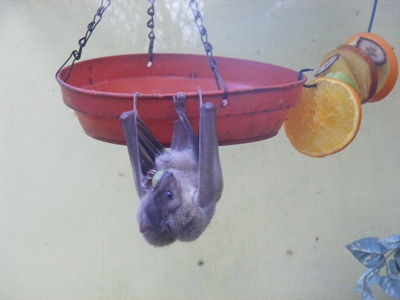
Egyptian Fruit Bat
A large bat that feeds on fruit, nectar, and pollen, making it an important pollinator and seed disperser. Unlike most bats, it uses a simple form of echolocation by making clicking sounds with its tongue.
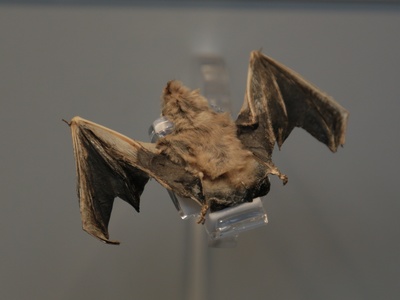
Common Pipistrelle
One of the most common bat species, this tiny mammal is often seen flitting around at dusk in parks and gardens, hunting for insects. A single pipistrelle can eat up to 3,000 insects in one night.
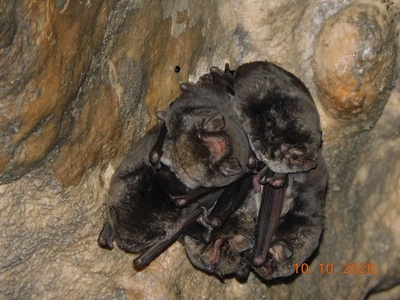
Schreiber’s Bent-winged Bat
A highly social bat species that forms massive colonies, sometimes numbering in the thousands. It is known for its long wings and fast flight, undertaking significant seasonal migrations between roosts.
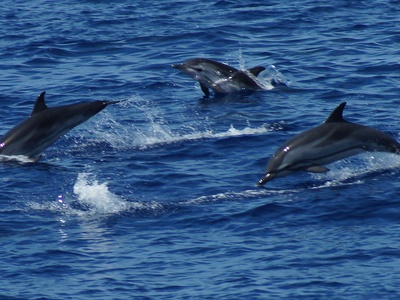
Striped Dolphin
A strikingly patterned dolphin often found in large, active pods far from shore. They are known for their acrobatic behavior, including high leaps and somersaults, making them a spectacular sight in the open ocean.
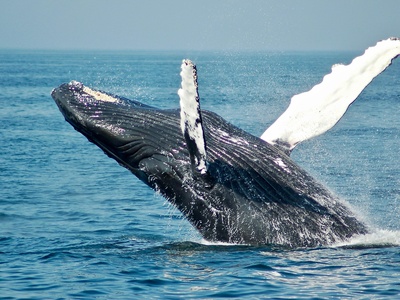
Sperm Whale
The largest toothed whale, famous for its massive head which contains a waxy substance called spermaceti. It is a deep-diving specialist that hunts for giant squid in the dark depths off the Algerian coast.
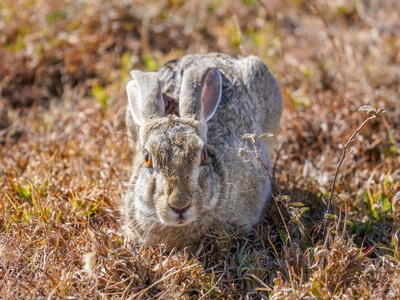
African Savanna Hare
A species of hare found in the savanna-like regions bordering the Sahara. It relies on its excellent camouflage and speed to avoid predators like eagles and caracals in its open habitat.
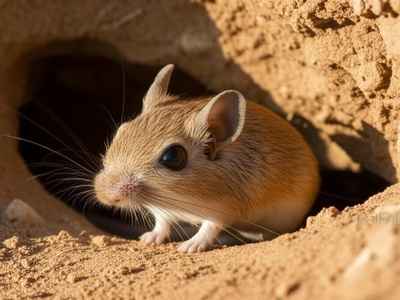
Maghrebian Gerbil
A small rodent species endemic to the Maghreb region. It is adapted to arid and semi-arid environments, where it burrows to escape the heat and predators, emerging at night to forage for seeds.
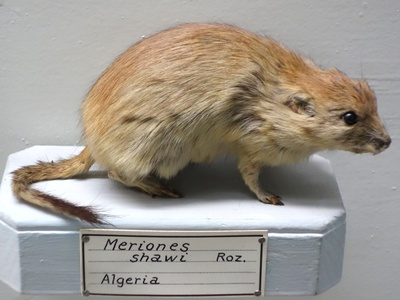
Shaw’s Jird
A common and relatively large gerbil found in northern Algeria. It is often considered an agricultural pest but plays a role as a primary food source for many predators, including owls and foxes.
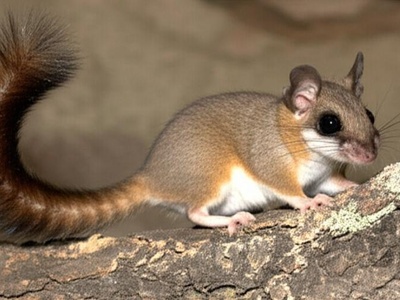
Maghrebian Garden Dormouse
A nocturnal rodent with a black mask around its eyes and a tufted tail. It is an agile climber, spending much of its time in trees and shrubs searching for fruits, insects, and nuts.
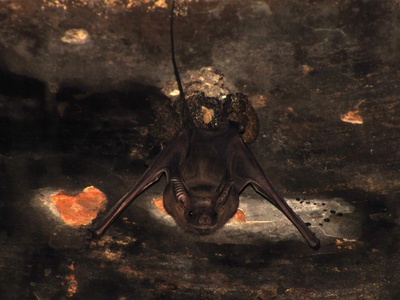
Lesser Mouse-tailed Bat
A small bat distinguished by its very long, slender tail, which is free of the wing membrane. It roosts in large colonies and is adapted to hot, dry climates, often entering a state of torpor during the day.
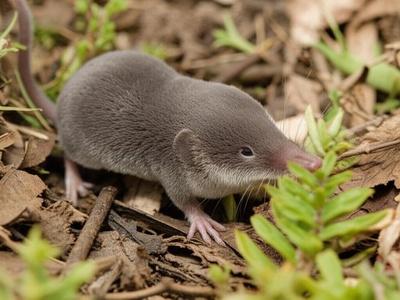
Algerian Shrew
A small, poorly understood shrew species found in the coastal regions of Algeria and Tunisia. Its secretive nature and limited range mean that little is known about its population status or specific habits.
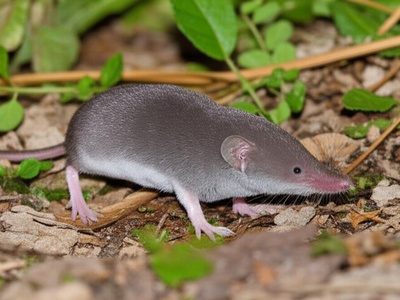
Barbary Shrew
Also known as the greater white-toothed shrew, this small insectivore is common in northern Algeria. It has a high metabolism and must eat frequently, consuming insects, worms, and other invertebrates.
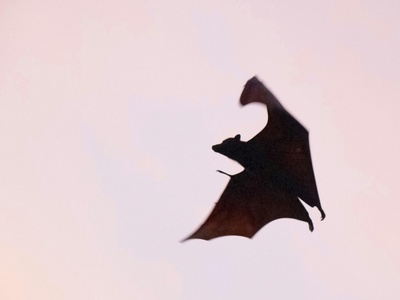
Savi’s Pipistrelle
A highly adaptable bat that roosts in rock crevices, buildings, and tree bark. It is a versatile flyer, capable of both fast, direct flight and slow, fluttering hunting among vegetation.
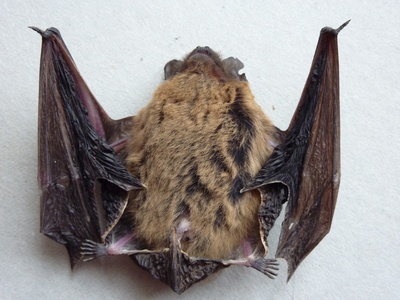
Kuhl’s Pipistrelle
A common bat species that has adapted well to human-modified landscapes, often found roosting in buildings. It is recognizable by a distinct white border on its wing membrane.
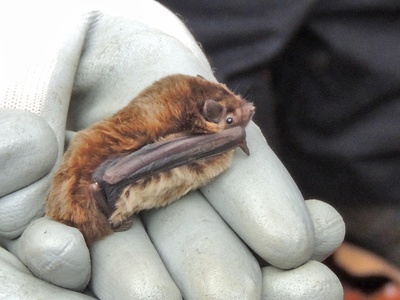
Leisler’s Bat
A medium-sized bat that is a fast, high-altitude flyer, hunting for moths and beetles above the treetops. It typically roosts in tree holes, forming small maternity colonies in the summer.
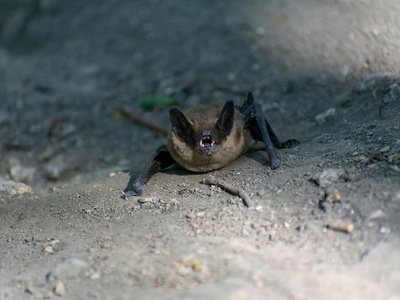
Greater Mouse-eared Bat
A large European bat species found in northern Algeria. It forages close to the ground, often picking up large beetles and crickets directly from the earth rather than catching them in flight.
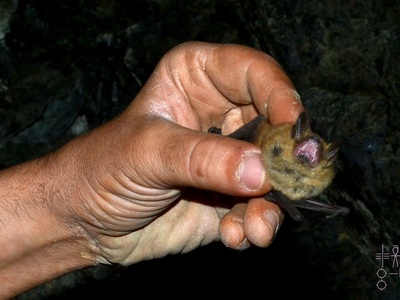
Geoffroy’s Bat
A medium-sized bat with a distinctive notch in its ear. It is a “gleaning” hunter, plucking spiders and other insects directly from foliage and walls, often without landing.
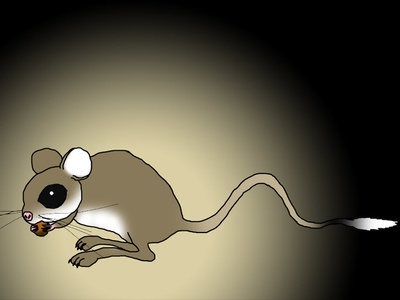
Lesser Egyptian Jerboa
A small desert rodent with incredibly long hind legs for bipedal hopping and a long tail for balance. It can cover great distances in search of seeds and plants, moving like a miniature kangaroo.
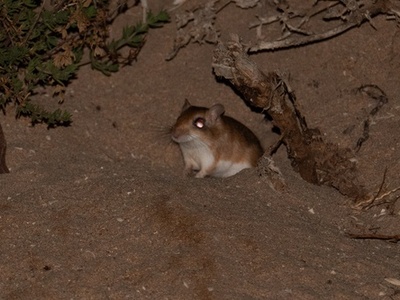
Hoogstraal’s Gerbil
A rare and little-known species of gerbil. It inhabits a very specific coastal habitat and is primarily known from only a few specimens, making its conservation status and biology a mystery.
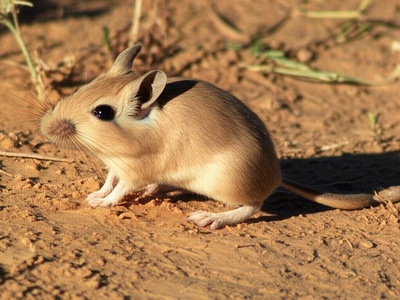
Rosy’s Gerbil
Another poorly understood gerbil species from Algeria’s interior. Its preference for specific soil types in arid environments makes it potentially vulnerable to localized habitat changes.
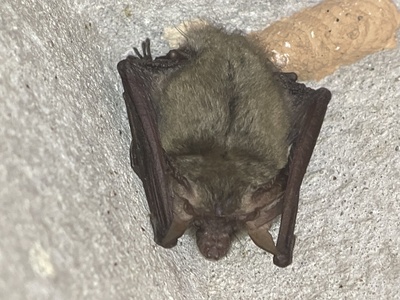
Plecotus gaisleri
A species of long-eared bat adapted to arid environments. Its enormous ears are used for passive listening to locate prey like moths and for precise echolocation in cluttered environments.
